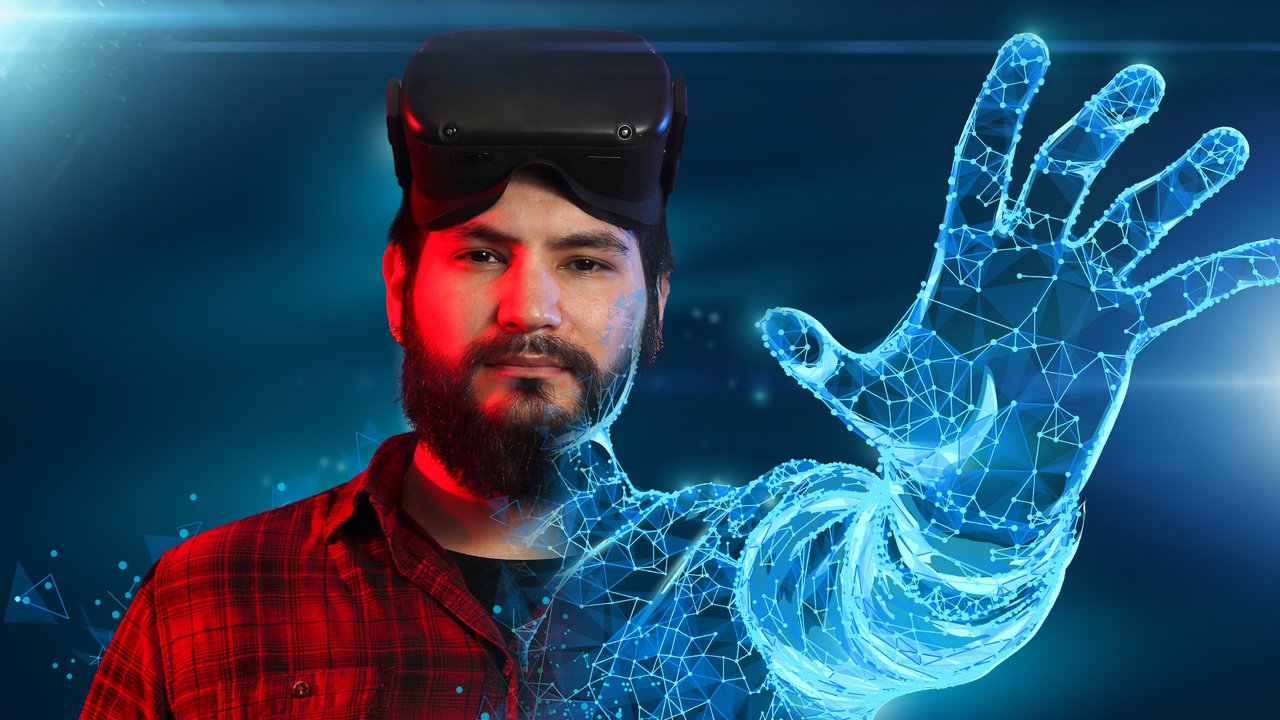EXPANDING LEARNING
EXPERIENCES THROUGH
EXTENDED REALITY
by Amanda Mattox
XR, which refers to all technologies that involve computer-generated environments that reproduce the experience of embodiment, can be used across a number of disciplines.
“The students have learned to work with a wider variety of software in a team coordinated environment,” he said. “Working together to produce well-organized and documented code improves throughput and makes our students more attractive in the outside marketplace.”
CSUSB has been able to create immersive technology opportunities for various fields, including archaeology, nursing and journalism.
In contrast, for CSUSB, the intention was not only to create an infrastructure that allows the lab to build XR learning experiences from scratch, but to do so in a project-based learning framework that ensures a student pipeline to the industry.
Designing, building and implementing these XR experiences has distinguished CSUSB’s lab, leading to it being featured by Educause, a nonprofit association in the United States whose mission is to advance higher education through the use of information technology. The lab was highlighted during Educause’s 2018 two-day online event, “eXtended Reality (XR): How AR, VR, and MR Are Extending Learning Opportunities,” and in its influential 2020 Horizon Report: Teaching and Learning Edition, which profiles key trends and emerging technologies.
The xREAL Lab has done some particularly notable work in virtual reality, a computer-generated immersive environment that users can experience and interact with by means of headsets and controllers.
The project is comprised of students from art, computer sciences, and music who work on programming the environment and its design; an instructional technologist to supervise the programming; an instructional designer to ensure that experience is designed with learning objectives in mind; and a graduate student with content-matter expertise for project management.
According to Robertshaw, the team plans on eventually developing 30 to 50 sites on Ambrosia, so students can repeat the simulation without encountering the same experiences.
The lab concept and the work on Ambrosia received the silver award in the category Innovation in Teaching, Learning and/or Accessibility at the Cal State 2019 Tech Conference in San Diego, which recognized excellence and outstanding contributions by CSU campuses, project teams and individuals across several areas. The category recognized integration of new technology in traditional classroom, hybrid, online or technology-assisted courses.
“We continually strive to provide our students with unique and innovative learning experiences in our lab – experiences they can use in and outside of the classroom,” said Samuel Sudhakar, vice president and chief information officer of Information Technologies Services, when CSUSB received the award.
“Nursing students are newbies … so they need more time, they need an opportunity to practice – even skills like patient teaching – outside of the patient care environment, which is busy with people coming and going,” she said. “It had been my observation that patient education opportunities in the hospital often had to happen under the time gun, under real time pressure.”
As a result, in 2018, Brandt came up with the concept to teach students how to interact with patients through an immersive virtual reality patient care simulation.
The pilot simulation, which launched in fall 2019, required students to interact with a virtual patient who needed some kind of education before that patient went home, such as directions on how to manage their chronic disease or how to take their medication. The simulated patient’s responses to the students were driven by artificial intelligence technology, like it is with the Ambrosia project, so the students would receive unique responses each time they interacted with them.
While skills such as learning how to properly administer a shot are certainly important, Brandt notes that this nursing simulation, which was carried out by nearly 35 students, focused on the significance of communication and relationship building, including patient education skills.
Brandt was also impressed with the many student programmers who helped create the simulation and said the whole ATI team was “amazing to work with.”
Although there were some initial glitches, Brandt notes that many of the students who participated in the simulation said the experience was “interesting and fun.” Brandt and the xREAL Lab team plan on improving and continuing the simulation in the future.
“The ability to superimpose digital objects over the real environment in a way that allows students to visualize them and interact with them as if they were real could potentially be a game-changer,” she said.
“My introduction to Dr. Popescu and the VR Lab was really a defining moment in the direction of my research, and I wouldn’t have such amazing opportunities available to me now if not for them.”
According to Popescu, the team has already started working on projects that aim to recreate the experience of learning in a photo studio or a STEM lab via 3D, interactive digital objects that create a sense of immersion and embodiment for students.




